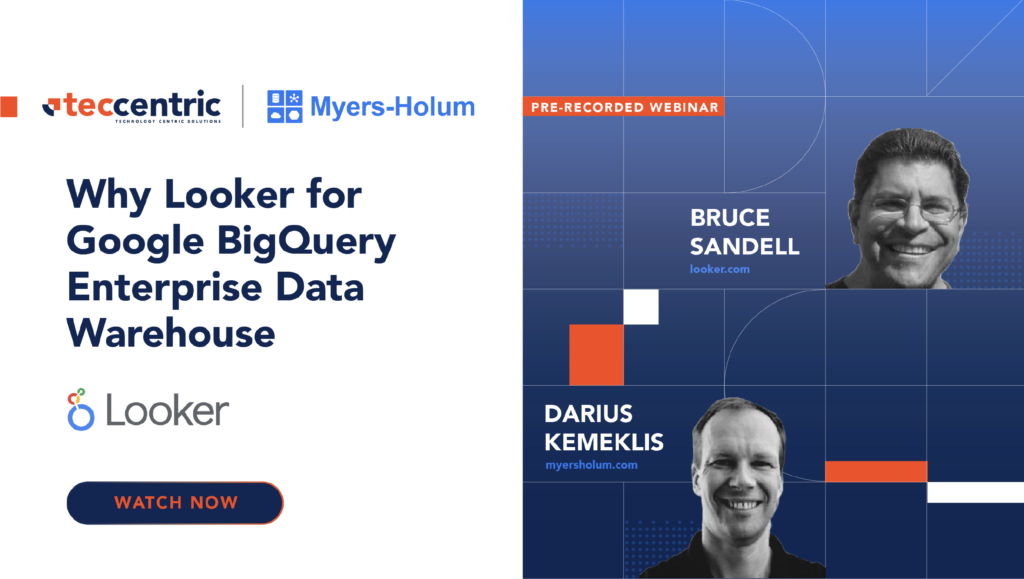In times when data has become the most valuable asset for any business, the need for suitable data warehouses has increased exponentially. Google BigQuery is a serverless data warehouse service that offers the features of a built-in query engine with a very highly scalable digital fabric. The query engine gives responses to SQL queries, and it can process terabytes of data within seconds and petabytes of data within minutes, respectively. Since it is not an on-premise solution, you do not have to invest in elaborate infrastructure and the worries to rebuild indexes periodically are also eradicated.
Google BigQuery is a revolutionary idea because of the ease with which you get to analyze large data sets. What is even more fascinating is the minuscule need to manage infrastructure, as it is essentially an ad-hoc service. Further, the simplicity of the serverless query management service makes it user-friendly and opens many new doors for businesses today.
Instilling higher degrees of openness and agility in organizations when it comes to data analysis is one of the biggest benefits of Google BigQuery. By combining it with Looker, you can obtain benefits like powerful insights, data concurrence, and elasticity.
The fact that companies like Twitter have acknowledged the contribution of BigQuery, which is helping it democratize data analysis across its departments like Finance, Marketing, etc., is a display of how important the service has become for the industry.
To learn more about the approach, methodology, and best practices of how to get both data warehousing as well as the BI layer migrated efficiently and gain the most value out of BigQuery and Looker, watch the pre-recorded webinar with Darius Kemeklis, Executive Vice President of the Myers-Holum Google Cloud Practice, and Bruce Sandell, the Senior Sales Engineer at Looker.
BigQuery Best Practice
1- Utilize the Google Cloud Storage
It is always beneficial to load the data onto the Google Cloud Storage before you intend to feed it to the BigQuery server. You can use gsutil, which is a simple python command-line tool prepared by Google to upload your data directly to Google Cloud Storage from anywhere.
Further, if you have any information stored in popular cloud storage platforms like AWS, you can use the storage transfer service from Google Cloud and fetch the data on your cloud. The GCS bucket and the BigQuery data set should be stored in the same location. This will create synergy and will help you transfer your queries easily and scalably.

2- File Compression Strategies
The compression of data before transferring it onto the BigQuery server is an important step. Compression not only helps in expediting the transfer because the load on the network is reduced, it is also beneficial because compression strategies are known to promote secure transfers. When you are loading the compressed data on BigQuery, it is worthwhile to remember to use Avro Binary block-level compression (details here), or Parquet block-level compression (details here) – note that file-level compression is not supported Do not use gzip compression as this results in a single-threaded data load execution.
Having said that, BigQuery can help upload uncompressed files as well, and in some cases, it is faster compared to compressed files. For example, when you have files in JSON or CSV format, it is better to load uncompressed files because parallel reading makes it faster.
3- Leverage Benefits of Denormalized Data
Denormalization is a popular database optimization methodology in which redundant data from multiple tables is combined and placed in a single table, which makes it easier for querying. Denormalization helps in increasing the reading speed of the database, while it may involve some trade-off with the writing performance.
Google BigQuery works best with denormalized data. The denormalized data that you should feed to the big query platform should be free of all relations. This way, you can leverage the benefits of nested and repeatable units. Since nested and repeated fields are best supported by formats like Avro, Parquet, ORC, JSON, etc., which are in turn most suitable for the processing in Google BigQuery, you set yourself up for easy analysis by following this method.
4- Partition Data Adequately
Using time-series data and partitioning techniques with Google BigQuery is coming up in a big way today. For those who do not know, time-series data is the one where specific data points are allotted a timestamp. Partitioning is the methodology of efficiently analyzing such timestamped data in an easier way by segmenting it further. The quantum of time series data generated by a company is huge, and the rate at which it tends to pile up over time is exponential.
You can use ingestion-time partition tables in BigQuery which is nothing but an automated feature where the platform itself uploads the data in specific date-based partitions. The other method is to use partitioned tables, which is the most frequently used way of utilizing and analyzing timestamped data in Google BigQuery. These tables involve the use of predicate filters that reduce the task of scanning the entire dataset for analysis. You can also define an integer data field-based partition for a table. The last way is to use a sharded table where time-based naming is utilized to partition the data. The categories so created make it very easy for the analysis to be completed.
To further improve performance, you can define clustering on a table. Clustering sorts rows in a specific order for faster access during query operation.

5- Use Stream Inserting of Data
Ideally, when you wish to insert data into an existing query table, you first have to create a load job that reads and processes the information from the source and then goes about inserting each detail into the table, one by one. When the quantum of data to be inserted in such tables is huge, the load job creation can be a very tedious and time-consuming process.
To avoid this, you should make use of the stream inserting feature. With the stream insert, you can use common cloud-based services like Cloud SDKs, Dataflow, etc., to directly import data.
This streaming data feature can be utilized multiple times to fill the entire table, as you wish. It is just that once you perform the stream insertion in this way, it takes a few seconds for it to be ready for another search stream-based data import.
6- Learn How to Push Bulk Updates
By using DML statements in Google BigQuery, you can push bulk updates with a single click. DML statements affect multiple rows of data at once. Therefore, by manipulating data in one statement, you can change and update data in multiple rows together. As of today, the quota or limit for the DML statement usage in Google BigQuery is only a thousand per day.
But if you utilize it judiciously, you can alter the data in multiple rows with every single statement. Running updates, merging statements, and affecting the query response or performance for many rows In a single step, that too in multiple ways, is one of the hallmarks of using Google BigQuery for data analysis.
7- Use of Federated Tables/Data
A Federated table is very much similar to it, just that it is directly connected to a remote server. So, whatever data you enter into this federated table, which is otherwise just like your regular sync table, will automatically be updated on the remote database.
It is important to know about using Federated tables in BigQuery because it is a very handy method of utilizing the data located on your Cloud platforms like Cloud BigTable,
GCS, Google Drive, and analyzing it using BigQuery tools. The query performance here may not be as good as any analysis done using native BigQuery methods. However, it is a quick and easy method for the users. There are other limitations of this methodology. Currently, common formats like Parquet or ORC are not supported yet.
8- Data Encryption in BigQuery
Knowing about the best practices to enhance the efficiency of data processing is important. However, it is equally important to learn how to make your data secure, while you process and analyze it using Google BigQuery. By default, the data in BigQuery is encrypted with the keys being managed by the Google Cloud Platform. However, alternate methods like the use of Google KMS service should be explored as well. You can also configure the Identity And Access Management (IAM) feature in BigQuery to allow only limited permissions and usage of your digital resources.
9- An Added Bonus: Looker with BigQuery for Enterprise Data Warehouse

When bringing data to Google BigQuery, you may also need to rethink your BI or analytics approach, and this is where Looker comes into play.
Looker is an enterprise-level platform that provides features of business intelligence, data applications, and embedded analytics. Google BigQuery as a service is a self-sufficient platform that does not require integration with Looker mandatorily. However, if your enterprise wishes to venture with business intelligence, data applications, and embedded analytics while dealing with BigQuery, it is advisable to have an integration with Looker.
The BigQuery Business Intelligence Engine SQL interface can easily be expanded to incorporate the Looker tools for analytics, application, etc. Knowing the best methodology of how to go about integrating Looker with BigQuery, everything becomes a cakewalk, and your enterprise gets to leverage the benefits of analytics and business intelligence seamlessly.
To learn more about why Looker is your best option with BigQuery for Enterprise data warehouse, check out the Looker and Myers-Holum webinar here.
Summing Up
The way BigQuery allows you to run interactive queries through an automated setup cannot be matched by any other similar data warehousing tool today. Features like running batch queries and the ease with which you can create virtual tables to visualize the same information make Google BigQuery the most suitable data analysis tool for businesses.
However, understanding how to leverage maximum benefits out of the platform is an important thing to learn. In this article, we have discussed the most high-value techniques and tips that can help you use the BigQuery platform for seamless advantages. Catering to multiple aspects like listing projects, managing data sets, and creating tables, can be a very valuable addition to your data analysis strategy. Create dashboards that are customized to your business needs and get regular reports as and when required to analyze aspects of business in detail.
TecCentric and Myers-Holum can help you obtain highly utilitarian benefits such as serverless insights, fast data analytics, and logical data warehousing, by updating your strategy to utilize Google BigQuery periodically. We offer the best way out which can help you optimize your data.
Use our Enterprise Data Warehouse Migration services, storage and compute separation, backup, and restore, along with other query related-methodologies to reap the best results for your projects.

